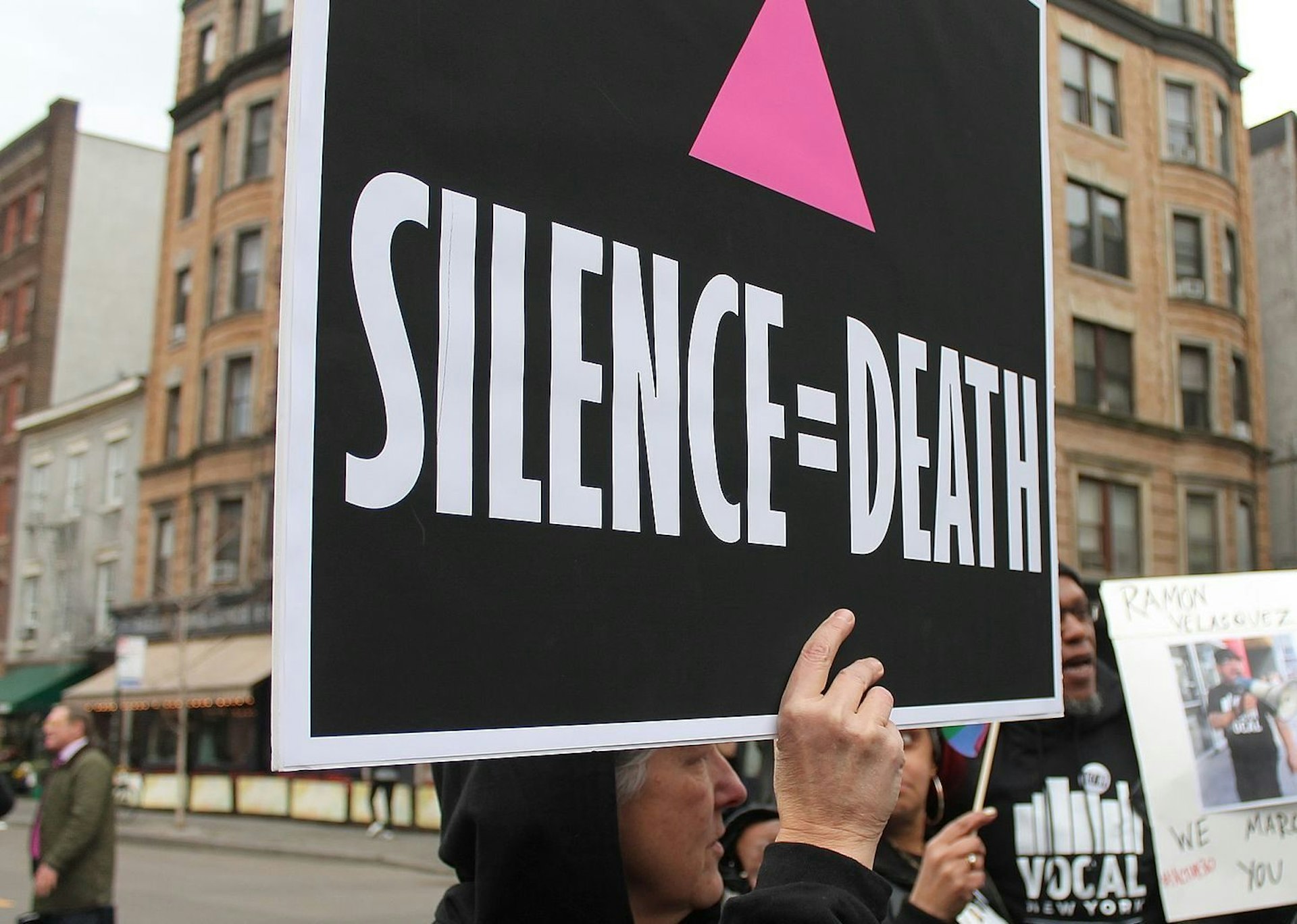
Have we already forgotten the AIDS crisis?
- Text by Jack King
- Photography by Elvert Barnes via Wikimedia Commons
The US Election has been on a knife-edge since Election Day, but with most of the votes left to count in key swing states being favourable to Democrats, it looks more and more likely that Donald Trump will join the likes of Jimmy Carter and George H. W. Bush as a one-term president.
According to exit polls, 17 per cent of voters considered COVID-19 to be the most important issue in their decision, third only behind the economy and racial inequality. Of those, 82 per cent voted for Biden. Had Trump not so disastrously fumbled the pandemic, it seems unlikely that the election would be so close.
As one Twitter user recently noted: “200,000+ have died over 7 months because of government mismanagement. As of now, only World War II saw more American deaths and we’ll pass that by the end of the year.” And this is not a novel assessment; as Clara Jeffery noted in September (in a tweet accruing 129,000 likes and 44,000 retweets): “COVID now 4th largest mass casualty event in US history. Topped only by the Civil War, WWII, 1918 flu pandemic.”
Both have neglected to consider the AIDS crisis – the United States’ last great pandemic. The crisis has resulted in the deaths of at least 700,000 Americans to date, whilst thirty-three million have died globally. And those Twitter users are hardly the first to forget: the AIDS crisis has been frequently erased in lieu of comparisons to the Spanish Flu, or one of America’s myriad armed conflicts.
COVID-19 has wrought disaster on an international scale, of course, but, at this time of writing, the United States has 9.5 million of the 48.1 million global infections; 234,000 of the 1.23 million global deaths. More than 100,000 people in the United States are now infected on a daily basis. We are likely facing years of disarray, and the ever-escalating scale of this pandemic cannot be understated. Make no mistake: this could have been avoided, and it is perfectly reasonable, or rather, sensible, to view the sheer scale of this crisis with illustrative historical context.
It is patently false to say, however, that only World War II saw more American deaths, or that, in September, coronavirus was the “fourth-largest mass casualty event in US history.” Whilst it’s difficult to find exact records, according to the Centres for Disease Control and Protection, the AIDS epidemic claimed the lives of around 330,000 people in the United States between 1988 and 1995. By comparison, just over 290,000 US combatants perished across the four years of US involvement during World War II.
#OtD 14 Sep 1989 seven members of the Aids campaign group ACT UP infiltrated the New York Stock Exchange and chained themselves to a balcony in protest at the high cost of the only Aids drug, AZT. Shortly after Wellcome cut its price by over 20%. https://t.co/Hf0BjrQUZF pic.twitter.com/mICTqBeFje
— Working Class History (@wrkclasshistory) September 14, 2020
The average yearly death rate (around 47,000) across the worst years of the AIDS crisis, then, comes very close to that of WWII (around 73,000), with said deaths mostly occurring within a disproportionate sliver of the US population. By 1992, HIV, the virus that causes AIDS, was the leading cause of death amongst men aged 24 to 44. (This is regardless of sexual orientation).
Where COVID-19 is concerned, would the AIDS crisis not be the logical comparison to make? Both pandemics have disproportionately affected the marginalised, particularly Black and poor communities, both have seen disparate reactions from a polarised public, and both have been marked by political inertia. But as Cleve Jones wrote in the Guardian in August, “Sadly then, as now, too many people not immediately affected by the disease felt they had no stake in the fight against it.”
I’m not arguing that this amnesia is deliberate, but it does echo the public disregard shown towards the crisis in its peak. Reagan responded to AIDS with similar lethargy to that of Trump to COVID-19, yet won a massive electoral landslide in 1984, carrying all but Walter Mondale’s home state of Minnesota and D.C., and his political capital would remain unscathed until he left office. He would not publicly say the acronym “AIDS” until September 17, 1985. Upwards of 12,500 Americans would die by the end of that year. It is only in retrospect that his legacy has been re-assessed.
The perception of AIDS as a disease of ‘the other’ remains, and as such, the devastation it wrought has been allowed to fall out of public memory – despite the historic death toll, and the fact that more than one million people in the US live with HIV. Would a biological terror that almost literally decimated a generation of gay men – partners, fathers, sons, brothers – be so quickly forgotten if it was not perceived to have exclusively affected minority groups? It seems inconceivable. It would be a cornerstone of the curriculum. Public holidays would be instituted.
At the very least, would it not be logical to look towards the struggle against HIV as a learning tool? The mode of transmission may differ from COVID-19, but there are many overlaps with the AIDS crisis: a lack of rigorous testing, a political approach ruled by ideological bias, and a public polarised by inflammatory rhetoric.
This would not erase our problems, but perhaps we would be equipped to face them with more clarity. Yet, here we are, 24 years after the AIDS crisis’ peak, when a Lazarus combination of protease inhibitors stopped victims dying en masse, and the commentariat reminisces on warfare and century-old flu.
It almost feels callous that AIDS has been forgotten in the current moment. But then, had more people cared when the crisis was at its worst, far fewer would’ve died in the first place.
Follow Jack King on Twitter.
Enjoyed this article? Like Huck on Facebook or follow us on Twitter.
